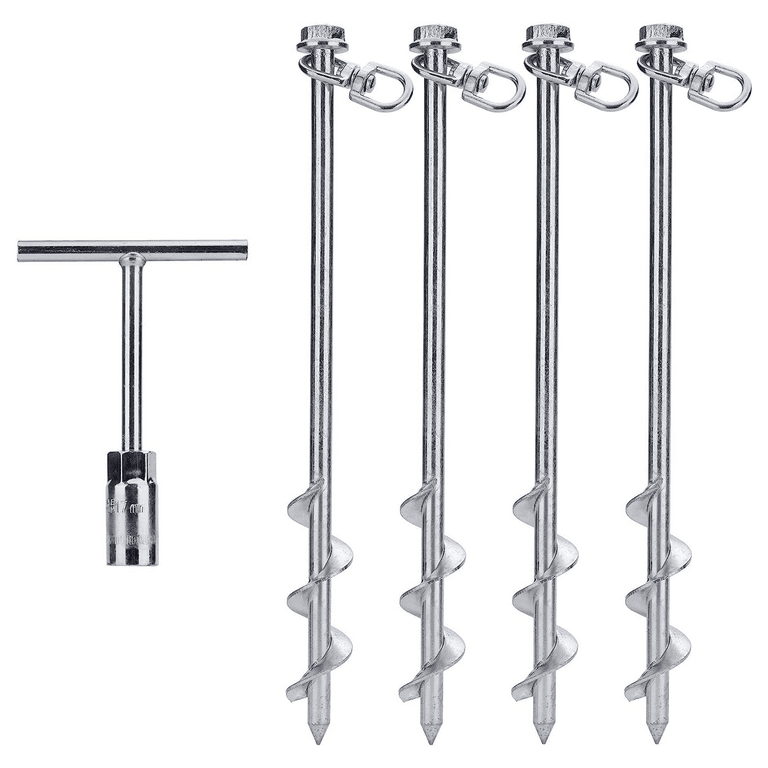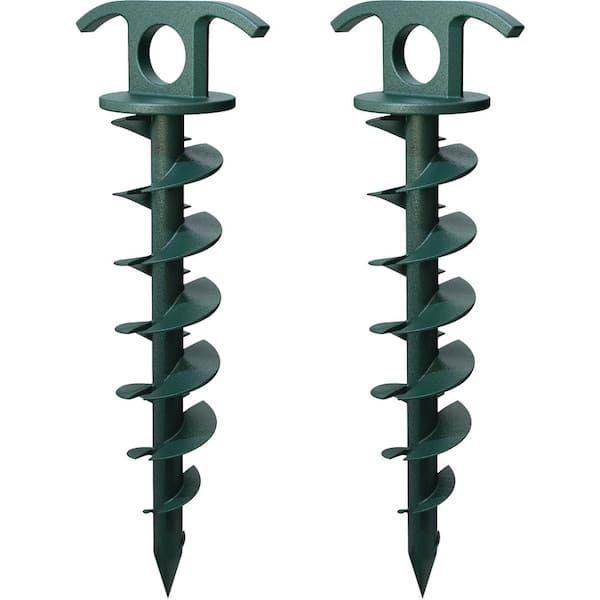Key Facts to Understand About Choosing the Right Ground Anchor for Your Needs
Key Facts to Understand About Choosing the Right Ground Anchor for Your Needs
Blog Article
Explore the Various Types of Ground Anchor for Your Following Task
From auger anchors, which succeed in diverse soil conditions, to risk supports designed for short-lived setups, the options are various. Additionally, concrete and screw supports present special benefits in details situations, while deadman supports are tailored for applications requiring resistance to side forces.

Auger Anchors
Auger anchors are a preferred choice in numerous construction and landscape design jobs due to their one-of-a-kind style and reliable anchoring capabilities. These anchors include a helical screw-like shaft that is driven into the ground, permitting a safe and secure and steady hold. The spiral design assists in very easy setup and makes best use of resistance versus lateral forces, making auger anchors specifically effective in applications such as fence, short-lived frameworks, and disintegration control.
The setup process of auger supports is relatively simple. Auger anchors can be easily eliminated and recycled, which adds to their cost-effectiveness and sustainability.
Among the considerable benefits of auger supports is their capacity to disperse tons uniformly throughout the surrounding dirt, minimizing the risk of soil disruption and lessening environmental effect. Furthermore, they are much less susceptible to loosening or heaving gradually compared to traditional anchoring approaches. Consequently, auger anchors are a superb choice for jobs requiring resilient and dependable anchoring options.

Stake Anchors
When it pertains to safeguarding structures in a range of outside applications, stake supports use a straightforward and trustworthy option. These anchors are commonly constructed from resilient materials such as steel or aluminum, developed to endure environmental tensions while offering optimal security. Their easy design permits for fast installment, making them a perfect choice for long-term or short-term anchoring requirements.
Stake anchors are particularly useful in securing outdoors tents, covers, and various other light-weight frameworks against wind and climate. They function by being driven right into the ground at an angle, producing a strong hold that stands up to pull-out pressures - Ground Anchor. The efficiency of stake anchors relies on a number of aspects, consisting of dirt type, dampness material, and the angle of installment
For added safety and security, several stake anchors feature attachment factors for ropes or straps, enabling tension changes as needed. In applications such as landscaping or building and construction, they can successfully stabilize equipment or frameworks on irregular terrain. In general, stake anchors provide a flexible and economical remedy for safeguarding different outdoor installations, making them a preferred choice for contractors and DIY enthusiasts alike.
Concrete Anchors
Concrete anchors give a durable solution for protecting structures to concrete surfaces, making certain security and safety and security in numerous applications. These supports are vital for jobs varying from household constructions to large industrial installations. They can be found in different kinds, including growth anchors, glue supports, and undercut supports, each created for certain tons demands and ecological problems.
When mounted,Growth anchors rely on mechanical devices to grasp the concrete. They are suitable for medium to durable applications. Adhesive supports make use of high-strength epoxy or resin to bond the anchor to the concrete, supplying superior load-bearing capacities, especially in broken concrete situations. Undercut supports create an unique shape within the concrete, supplying outstanding holding power, especially in applications where tensile lots are prevalent.
Picking the ideal concrete support involves thinking about elements such as the weight of the tons, the problem of the concrete, and environmental conditions. Appropriate setup strategies are crucial to guarantee optimal performance and integrity. When carried out correctly, concrete anchors substantially enhance the architectural stability of various jobs, making them indispensable in contemporary construction techniques. Comprehending the details demands of your task will aid in choosing the ideal sort of concrete anchor for the task.
Screw Anchors

Screw supports are a functional securing remedy that can be successfully used in a selection of applications where conventional concrete anchors may not be enough. These anchors contain a helical layout that permits them to be my company conveniently driven right into the ground, making them excellent for use in soil and various other substratums. Their special structure gives exceptional holding power and resistance to pull-out forces, making them ideal for countless jobs, from landscaping to structural assistance.
Among the main advantages of screw anchors is their ease of setup. They require marginal equipment and can usually be set up without the need for excavation, which conserves both time and labor expenses. In addition, screw anchors a knockout post can be removed and recycled, using a lasting remedy for momentary applications.
Screw supports are especially beneficial in areas where soil conditions are testing, such as loosened or sandy soils. Their capability to be mounted at differing depths permits personalization based on certain task needs. On the whole, screw anchors give a trusted and efficient securing technique, making them an exceptional choice for contractors and engineers seeking effective solutions for their projects.
Deadman Anchors
Deadman anchors act as a durable remedy for supporting structures in challenging problems, especially where typical securing methods may fail. These supports consist of large, hefty objects buried underground, which develop resistance versus lateral forces. The design commonly includes a horizontal part, such as a block of concrete or a metal plate, hidden in the soil, to which cables or bands are attached.
The efficiency of deadman supports depends on their ability to disperse lots over a larger location, reducing the risk of failing in unsteady dirt conditions. They are particularly advantageous in applications such as retaining walls, momentary structures, and slope stablizing, where soil activity can compromise the stability of the framework.
Installation of deadman anchors requires careful preparation to additional reading guarantee they are placed at the correct depth and alignment, maximizing their load-bearing capability. While they may need more labor and product than lightweight supports, their dependability in unfavorable conditions makes them indispensable for long-term projects. Deadman anchors are flexible and can be adapted to different applications, making them a best option for designers encountering one-of-a-kind difficulties in their tasks.
Final Thought
Auger anchors succeed in diverse dirt conditions, while stake supports match momentary applications. For concrete surface areas, expansion and adhesive supports supply trustworthy choices, and screw supports offer flexibility in difficult surfaces.
Additionally, concrete and screw supports existing one-of-a-kind benefits in details situations, while deadman anchors are tailored for applications calling for resistance to lateral pressures - Ground Anchor.Auger anchors are a prominent option in various building and construction and landscape design jobs due to their special design and reliable securing capacities. They come in various types, consisting of development supports, glue supports, and undercut anchors, each developed for particular tons needs and environmental problems
Glue supports use high-strength epoxy or resin to bond the anchor to the concrete, supplying premium load-bearing capacities, particularly in broken concrete situations. On the whole, screw supports provide a trusted and reliable securing method, making them an exceptional option for designers and contractors looking for efficient solutions for their projects.
Report this page